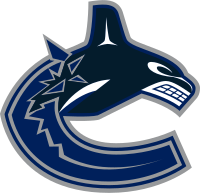UFA Reminder / Contract Negotiations
May 2, 2021 13:30:02 GMT -5
Buffalo Sabres, Edmonton Oilers, and 5 more like this
Post by Nashville Predators on May 2, 2021 13:30:02 GMT -5
We are almost two weeks from the trade-deadline, which means the UFA negotiating window will soon close. We will continue to negotiate with UFA's that have offers in, but any new negotiations will be ceased after the deadline. Another reminder than any signed UFA will automatically take up a protection slot for the expansion draft. It is also important to remember that any teams that do not meet the exposure criteria will be penalized draft picks (Vegas is exempt from these expansion rules) Please refer to the expansion rules in the link below. RFA negotiation will continue into the offseason.
vhockey.proboards.com/thread/22943/2021-expansion-draft-seattle-kraken?page=1
We also felt this would be a good time to go through a quick refresher on contract negotiations. We have several new and returning GM's, and feel it would be worthwhile to review what the Staff look for in a contract offer, and some of the common patterns we see in negotiations. Please review the following:
1. Comparable Contracts:
We base our contracts / negotiations of NHL statistics and VHL contracts. Our market is dictated by what our GM's are willing to pay for their players, not how much you feel they are worth. Please glance through the VHL free agency threads from previous seasons to find contract comparisons
vhockey.proboards.com/thread/23201/2021-signed-free-agents-season?page=3
2. Negotiations / Arguments:
One thing that really drives us nuts is when GMs send an offer with no comparison or accompanying statistical / contextual arguments. It really doesn't take that long to find a couple of recently signed players, look at the NHL stats page, and put together a paragraph or two. You can use any conventional stat, advance metric, or contextual argument you wish to make your case. We generally ask you use more than one years worth of stats, but that can vary depending on the player (see #3 below). How in depth you go is up to you, but if you put more effort into the negotiation, you'll likely come out with a better deal.
3. RFA vs. UFA
How we look at a stats varies based on age, and whether a player is an RFA or UFA.
RFA's are generally younger, and are still developing as players. Using a players rookie and/or sophomore numbers in a negotiation usually only serves to depress their stats and doesn't account for player growth. We tend to weigh an RFAs current stats more, as they are better predictors of future success. If you want a long term deal for an RFA, future growth and any years of UFA eligibility bough in the contract must also be taken into account. Bridge deals will usually be less in terms of overall value, but will still be based on VHL comparables.
For UFA's we focus more on the past 2-3 seasons of statistics and look for trends to determine a players value. Re-signed UFA will almost always get less than what they could sign for in the off-season free agent bidding, but we will not re-sign a UFA if we do not feel they are getting close to market value. Which brings us to.....
4. Low balling
If you send an obvious low ball offer with no accompanying argument, you will probably get an equally ridiculous high ball offer in return. Please don't waste our time...
5. Injuries
One common argument we get from GMs is that injury prone players deserve less money. As a Staff, we have always argued against this as our ratings are based on "per game" stats instead of overall numbers. You may be able to argue the length of the deal down, but the yearly salary of the contract is generally not affected by injury, unless it is something catastrophic where the player misses most of the season
6. Flat Salary Cap
There have been a couple of arguments made that the flat cap means players should be taking pay-cuts / discounts. We have been negotiating contracts for almost a year now, knowing the cap would be flat, and have not signed one player to a discounted rate based on the flat cap. We are a league that plays with fake money. There are no real financial implication of the pandemic in the VHL and each GM still has the capability to spend to the cap if they desire. There may be a lack of contract inflation in the coming years, but we see no reason why the current cap situation means players should be receiving discounts compared to their VHL comparables.
______________________________________________
Below is contract offer from Travis (Washington), who has allowed us to use his opening arguments for Clayton Keller as an example of what we look for in a negotiation
"For my offer for Clayton Keller, I will include the comparables of recent RFA signings Andre Burakovsky(26, 2 yrs @ 5.5m), Anthony Cirelli(23, 2 yrs @5.5m), and Mat Barzal(23, 2 yrs @6.2m).
Clayton Keller:
2018/19 GP 82, G 14, A 33 ,P 47, PPG .573, GPG .171
2019/20 GP 70, G 17, A 27, P 44, PPG .629, GPG .243
2020/21 so far, GP 47, G 13, P 32, PPG .68, GPG .277
3 yr average PPG .618, GPG .221
Andre Burakovsky:
2018/19 GP 76, G 12, A 13, P 25, PPG .329, GPG .158
2019/20 GP 58, G 20, A 25, P 45, PPG .776, GPG .345
2020/21 so far, GP 40, G 12, A 15, P 27, PPG .675, GPG .3
***3 yr average PPG .557, GPG .253*** Significant jump since joining Colorado in 2019/20
Colorado average PPG .735, GPG .327
Anthony Cirelli:
2018/19 GP 82, G 19, A 20, P 39, PPG .476, GPG .232
2019/20 GP 68, G 16, A 28, P 44, PPG .647, GPG .235
2020/21 so far, GP 40, G 9, A 13, P 22, PPG .55, GPG .225
3 yr average PPG .553, GPG .232
Mat Barzal
2018/19 GP 82, G 18, A 44, P 62, PPG .756, GPG .29
2019/20 GP 68, G 19, A 41, P 60, PPG .882, GPG .279
2020/21 GP 46, G 13, A 19, P 38, PPG .826, GPG .283
3 yr average PPG .816, GPG .255
First off, Mat Barzal is a 1st line center and definitely the cream of the crop amongst RFA's signed already this year. Keller should obviously make less than Barzal.
Burakovsky has been the best goal scorer on this list since joining Colorado, and the only comparable winger to Keller in this year's current RFA signings. He also has one UFA year included in his contract. Goal scoring and UFA status years demand higher prices from what I understand. Burakovsky currently is -.005 PPG and +.023 GPG compared to Keller this year. Therefore, Keller should be making less than Burakovsky as well.
Cirelli has more consistent goal scoring than Keller over the last 3 years. Keller is currently having a better season production-wise than Cirelli. However, Cirelli kills penalties and was recently 4th in Selke voting last year. His defensive capabilities outweigh the lower production. Overall, Cirelli is more valuable than Keller and deserves a higher paycheck.
These contracts are all two years in length, with Cirelli and Barzal being bridge deals. Based on these comparables, the Washington Capitals offer Clayton Keller a contract extension worth $4.75 million a year for two years."
_____________________________________________________
Travis provided good statistical and contextual arguments, and we responded with our own, along with what we felt was a fair offer. Keller eventually signed for more than what he initially offered, but this is an excellent example of what an opening offer should look like. You do not have to go this in depth for every player or negotiation, but this is the sort of stuff we look for in an offer
vhockey.proboards.com/thread/22943/2021-expansion-draft-seattle-kraken?page=1
We also felt this would be a good time to go through a quick refresher on contract negotiations. We have several new and returning GM's, and feel it would be worthwhile to review what the Staff look for in a contract offer, and some of the common patterns we see in negotiations. Please review the following:
1. Comparable Contracts:
We base our contracts / negotiations of NHL statistics and VHL contracts. Our market is dictated by what our GM's are willing to pay for their players, not how much you feel they are worth. Please glance through the VHL free agency threads from previous seasons to find contract comparisons
vhockey.proboards.com/thread/23201/2021-signed-free-agents-season?page=3
2. Negotiations / Arguments:
One thing that really drives us nuts is when GMs send an offer with no comparison or accompanying statistical / contextual arguments. It really doesn't take that long to find a couple of recently signed players, look at the NHL stats page, and put together a paragraph or two. You can use any conventional stat, advance metric, or contextual argument you wish to make your case. We generally ask you use more than one years worth of stats, but that can vary depending on the player (see #3 below). How in depth you go is up to you, but if you put more effort into the negotiation, you'll likely come out with a better deal.
3. RFA vs. UFA
How we look at a stats varies based on age, and whether a player is an RFA or UFA.
RFA's are generally younger, and are still developing as players. Using a players rookie and/or sophomore numbers in a negotiation usually only serves to depress their stats and doesn't account for player growth. We tend to weigh an RFAs current stats more, as they are better predictors of future success. If you want a long term deal for an RFA, future growth and any years of UFA eligibility bough in the contract must also be taken into account. Bridge deals will usually be less in terms of overall value, but will still be based on VHL comparables.
For UFA's we focus more on the past 2-3 seasons of statistics and look for trends to determine a players value. Re-signed UFA will almost always get less than what they could sign for in the off-season free agent bidding, but we will not re-sign a UFA if we do not feel they are getting close to market value. Which brings us to.....
4. Low balling
If you send an obvious low ball offer with no accompanying argument, you will probably get an equally ridiculous high ball offer in return. Please don't waste our time...
5. Injuries
One common argument we get from GMs is that injury prone players deserve less money. As a Staff, we have always argued against this as our ratings are based on "per game" stats instead of overall numbers. You may be able to argue the length of the deal down, but the yearly salary of the contract is generally not affected by injury, unless it is something catastrophic where the player misses most of the season
6. Flat Salary Cap
There have been a couple of arguments made that the flat cap means players should be taking pay-cuts / discounts. We have been negotiating contracts for almost a year now, knowing the cap would be flat, and have not signed one player to a discounted rate based on the flat cap. We are a league that plays with fake money. There are no real financial implication of the pandemic in the VHL and each GM still has the capability to spend to the cap if they desire. There may be a lack of contract inflation in the coming years, but we see no reason why the current cap situation means players should be receiving discounts compared to their VHL comparables.
______________________________________________
Below is contract offer from Travis (Washington), who has allowed us to use his opening arguments for Clayton Keller as an example of what we look for in a negotiation
"For my offer for Clayton Keller, I will include the comparables of recent RFA signings Andre Burakovsky(26, 2 yrs @ 5.5m), Anthony Cirelli(23, 2 yrs @5.5m), and Mat Barzal(23, 2 yrs @6.2m).
Clayton Keller:
2018/19 GP 82, G 14, A 33 ,P 47, PPG .573, GPG .171
2019/20 GP 70, G 17, A 27, P 44, PPG .629, GPG .243
2020/21 so far, GP 47, G 13, P 32, PPG .68, GPG .277
3 yr average PPG .618, GPG .221
Andre Burakovsky:
2018/19 GP 76, G 12, A 13, P 25, PPG .329, GPG .158
2019/20 GP 58, G 20, A 25, P 45, PPG .776, GPG .345
2020/21 so far, GP 40, G 12, A 15, P 27, PPG .675, GPG .3
***3 yr average PPG .557, GPG .253*** Significant jump since joining Colorado in 2019/20
Colorado average PPG .735, GPG .327
Anthony Cirelli:
2018/19 GP 82, G 19, A 20, P 39, PPG .476, GPG .232
2019/20 GP 68, G 16, A 28, P 44, PPG .647, GPG .235
2020/21 so far, GP 40, G 9, A 13, P 22, PPG .55, GPG .225
3 yr average PPG .553, GPG .232
Mat Barzal
2018/19 GP 82, G 18, A 44, P 62, PPG .756, GPG .29
2019/20 GP 68, G 19, A 41, P 60, PPG .882, GPG .279
2020/21 GP 46, G 13, A 19, P 38, PPG .826, GPG .283
3 yr average PPG .816, GPG .255
First off, Mat Barzal is a 1st line center and definitely the cream of the crop amongst RFA's signed already this year. Keller should obviously make less than Barzal.
Burakovsky has been the best goal scorer on this list since joining Colorado, and the only comparable winger to Keller in this year's current RFA signings. He also has one UFA year included in his contract. Goal scoring and UFA status years demand higher prices from what I understand. Burakovsky currently is -.005 PPG and +.023 GPG compared to Keller this year. Therefore, Keller should be making less than Burakovsky as well.
Cirelli has more consistent goal scoring than Keller over the last 3 years. Keller is currently having a better season production-wise than Cirelli. However, Cirelli kills penalties and was recently 4th in Selke voting last year. His defensive capabilities outweigh the lower production. Overall, Cirelli is more valuable than Keller and deserves a higher paycheck.
These contracts are all two years in length, with Cirelli and Barzal being bridge deals. Based on these comparables, the Washington Capitals offer Clayton Keller a contract extension worth $4.75 million a year for two years."
_____________________________________________________
Travis provided good statistical and contextual arguments, and we responded with our own, along with what we felt was a fair offer. Keller eventually signed for more than what he initially offered, but this is an excellent example of what an opening offer should look like. You do not have to go this in depth for every player or negotiation, but this is the sort of stuff we look for in an offer
















